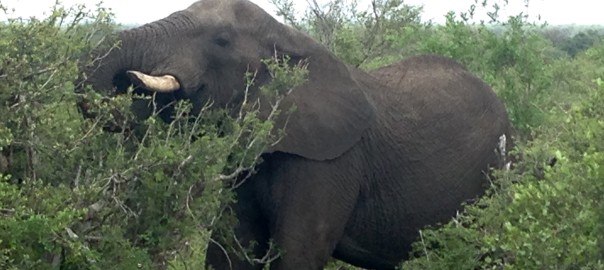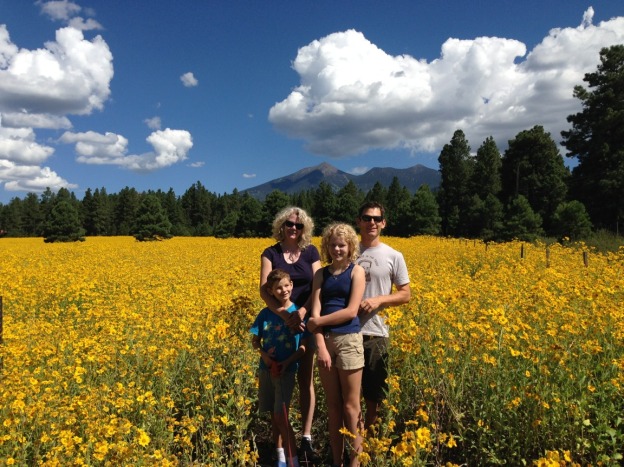In March, the lab group made a trip to Kruger National Park in South Africa to survey the tree resprouting experiment. Savanna trees suffer frequent damage from large herbivores. Often the whole crown of the tree is knocked over and crushed. How fast and vigorously a damaged tree can resprout determines survival, growth, and reproduction–things that plant ecologists, like us, find fascinating. Resprouting is also important for maintaining forage for animals, firewood for humans, and for carbon storage in these ecosystems. In 2011, we set up an experiment across the Kruger Climate Gradient to examine what factors control tree resprouting. Is it soil moisture? Soil nutrients? Tree species? Tree age or size? We are exploring these questions while enjoying the southern hemisphere sun!
Becky Hewitt (left), Samantha Miller (center), and Ben Ketter (right) chortle over trees decapitated for developing allometric relationships.
Xanthe Walker discovers that savanna trees are much taller than those in the taiga ecosystems of the high northern latitudes.
Thoughtful measurement of stem diameters by Ben Ketter (left), Becky Hewitt (middle) and Corey Nielson (right).
Ricardo Holdo (center) protects himself from herbivores while Ben Ketter (left) takes notes.








